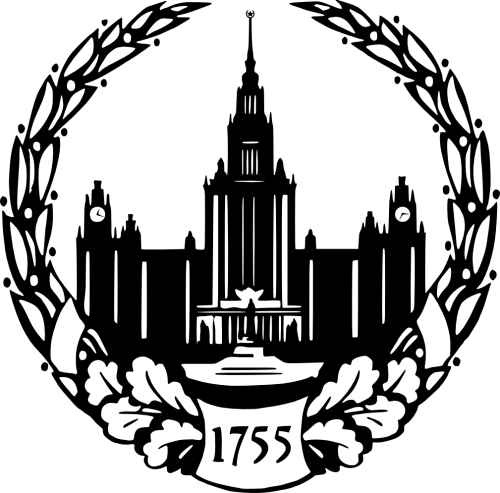Tchougreeff theory group, Dubinin Laboratory of Sorption processes
1Numbers in square brackets refer to the pubications list. Electronic Structue of Low-dimensional Materials • A theory for electronic structure and magnetic interactions in low-temperature and room-temperature Miller-Epstein magnets (in cooperation with Prof. R. Hoffmann) [50, 63, 122, 124, 126]. • An electronic theory of the scanning tunnel microscopic (STM) images of graphite and its intercalation compounds with account of electron-electron interactions (in cooperation with Prof. R. Hoffmann) [107, 125]. • Electronic structure and electrophysical properties of conducting polymers [127, 129, 130, 131, 132, 133, 135, 137]. • Theory and numerical modeling of cooperative effects in spin transitions in molecular crystals based on atom-atom potential [47, 59, 111, 115, 116, 120]. • Spin-liquid phases and unconventional magnetic properties of copper carbodiimide: CuNCN (in cooperation with Prof. R. Dronskowski) [20, 39, 41, 45, 49, 52, 56]. New generation of quantum chemistry methods A new generation of quantum chemistry methods based on the group-product electronic wave functions is developed [62]. Specifically: • Effective Hamiltonian/Crystal Field (EHCF) method [123, 128] for ground states and d-d excitation spectra of transition metal complexes – a heavy task for standard quantum chemical methods. Dozens of complexes [92, 99, 100, 101, 102, 105, 106, 118, 119] calculated yield in all cases the correct ground state and excitation spectra including those of spin-crossover complexes of iron(II) [70, 116] and iron(II) porphyrine [100, 106] – task not solved until now by standard quantum chemistry. • Boutleroff-Fock (BF) family of methods based on geminals [57, 60, 69, 71, 81, 88, 90, 94, 98]. Its O(N) scalability is directly numerically checked for up to 10000 of atoms. Deductive Molecular Mechanics Molecular Mechanics (classical force fields) – versatile, but poorly founded practical laboratory tool – has been derived from the geminal description of molecular electronic structure. Further development of the geminal-based approach led to simple analytical formulae for the bond energies through interactions of flexible hybrid orbitals dubbed as Deductive Molecular Mechanics [75, 76, 78]. This gave us • QM/MM junctions in the hybrid methods [62, 80, 85, 97] allowing among other things an incorporation of transition metal ions with open d-shells in molecular mechanics context. Subsequent geometry optimization of dozens of iron(II) and cobalt(II) complexes of various total spin yielded remarkable agreement with experiment [73, 77, 83]. Further application to more specific objects led to: • Analytical theory of carbon allotropes [11, 15, 17]. • Analytical theory of phase diagram of water ices [19, 24]. Catalysis Our analysis of many-electron states of catalytic complexes revealed the rˆole of quantum mechanical entanglement for the catalytic action [43, 134, 142]. This established relations between the activity and spectra of the catalysts in three major classes of reactions: 1. Woodward-Hoffmann (orbital symmetry) forbidden [43, 110, 134, 142], 2. spin forbidden [43, 143], 3. restricted by exchange repulsion [121, 138]. Other research topics Some more tasks have been addressed throughout the carrier. Among them: • DFT and EHCF modeling of electronic structure and magnetic interactions in organometallic magnets. Applications to room-temperature organometallic magnets, transition metal carbodiimides and Prussian blue analogs [26, 38, 46] (in cooperation with Prof. R. Dronskowski). • Theory of two dimensional Rietveld refinement of neutron diffractograms as dependent on scattering angle and neutron wavelength [21, 30] in the frame of the POWTEX project (in cooperation with Prof. R. Dronskowski). • Theory of projection of PAW/DFT wavefunctions to local atomic basis states [26, 38, 46] (in cooperation with Prof. R. Dronskowski). Software development : The following quantum chemistry packages have been developed as based on the above original theoretical concepts summarized in [62]. The efficiency as achieved through the adequate identification of electronic groups in each target class of molecules and the accuracy as achieved through thorough analysis of intergroup interactions. • ecf - family of methods targeted at description of electronic structure and lower (d-d) excitations of transition metal complexes as based on EHCF theory [123]. Options for calculation of g-factors and quadrupole splitting in M¨obauer spectra are available. • bf - family of the O(N) scaling methods as based on geminal wave function and targeted on “organic” molecules with well defined two-center bonds [88, 94]. Options of calculating heats of formation and molecular geometries as well as ionization potentials are available. • ecfmm - the hybrid ECF - Molecular Mechanics package targeted on geometry optimization of transition metal complexes with open d-shells [73, 77, 83]. Consistently reproduces the relative energies and molecular geometries of spin-isomers. • bfmult - the package with O(N) scaling using the geminal and scf functions for electronic groups (resp., two-center bonds and extended quasi -systems like nanotubes or fullerenes) as combined with the multipole expansion for twocenter Coulomb integrals for better performance [60, 81]. Options of calculating heats of formation and molecular geometries are available. • catal - the package targeted to description of electronic structure of catalytic complexes containing transition metal atoms [43, 93]. Employs flexible wave function allowing for entanglement between the electronic states of the d-shells and those of the reactants/products. • MagAˆıxTic - a package for calculating magnetic interactions in polynuclear transition metal complexes. [28, 40, 42]. • molcryst - the package for calculating structure, thermodynamics, and phonon spectra of molecular crystals with use of atom-atom scheme [59]. • Lobster - the package for extracting chemical information from output of PAW-based solid state quantum chemistry software (VASP and similar) [26, 38, 46] (in cooperation with Prof. R. Dronskowski). • Adamas - geminal-based package targeted on carbon allotropes [11, 15, 17]. Options for elasticity moduli of allotropes are available. • ThetaPhi - the solid state quantum chemistry package making computationally available spin-liquids, superconductors and magnetic superstructures [5, 9, 14]. • cartesius fort - object fortran library for chemistry and materials science based on the above theoretical concepts of group functions and their interactions [18]. See https://cartesius.info/doxygen/index.html for more details. All the program packages (except Lobster) are available for use at the URL https://netlab.cartesius.info/ through the self developed NetLaboratory system based on the HTTP protocol. For terms and conditions of using Lobster see http://www.cohp.de.
- Аналитические методы, численное моделирование, программирование










